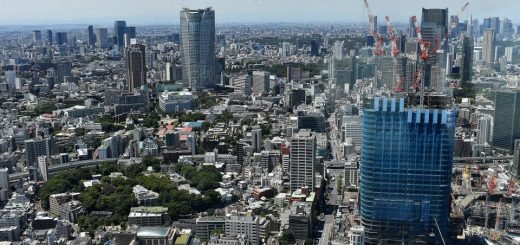Fukushima pain lingers on in Japan

Japan has marked the 10th Anniversary of the earthquake and tsunami which killed thousands of people and triggered the worst nuclear accident since Chernobyl. Former BBC Tokyo Correspondent Duncan Bartlett reflects on events in conversation with BBC Radio Five presenter Dotun Adebayo. Here’s a transcript of their live broadcast.

Dotun Adebayo: The Japanese government is holding a Memorial service later on today (March 11th, 2021) to mark the anniversary of the Fukushima disaster. Exactly 10 years ago, a giant earthquake and tsunami hit the Northeast coast of Japan. Dozens of towns and villages were engulfed by the immense wave. Around 18,500 people died or disappeared, and more than 160,000 people were forced from their homes. The wave also triggered a multiple meltdown at the Fukushima Daiichi nuclear plant, which is about 250 kilometers North of Tokyo. It was the world’s worst nuclear accident since Chernobyll in 1986.
Duncan Bartlett was the BBC’s Japan Correspondent and is now the editor of Asian Affairs magazine and a research associate at the SOAS School of Oriental and African Studies University of London. I asked him to take us back and explain how the events unfolded in Fukushima.
DB: The Japanese, describe it as a triple disaster because it started with the earthquake. And then we began to learn about the tsunami, which struck about an hour later. Then there was the unfolding nuclear crisis. The earthquake occurred several miles off the coast of Eastern Japan that triggered the enormous tsunami, the great wave, which hit the coastline, which wiped out several small towns. Then as the water traveled across the country, it led to the meltdown at the Fukushima Daiichi nuclear power plant, the nuclear reactors crumpled. There was a series of explosions. The roof of the complex blew off.
DA: Didn’t it take some time for the nuclear disaster to emerge? Wasn’t there a period of time when they were somehow trying to avert the inevitable, because they knew that the nuclear plant was in the path of the tsunami?
DB: You’re absolutely right. The people who were working in the nuclear plant at the time realized that there was the potential for an imminent disaster. They tried to shut down the reactors, but of course it was too late. And by the time the wave struck, the devastating impact was enormous. The problem was that the government and the power company really tried to play down how serious the situation was. And for several days they were trying to reassure people. They said, “Don’t worry, everything’s under control”. But actually what was happening was that the nuclear radiation was spreading. And the government then had to say: “You need to get out of the area.” The whole region was evacuated, but because of the mixed message that were coming from Tepco, the power company and the government, it really broke down trust and I don’t think that’s ever really been restored actually.
DA: From which of the three calamities that coalesced with those deaths, which one caused the greatest loss of life?
DB: That was due to the tsunami and the earthquake itself. But it was particularly the tsunami because it smashed into the Eastern coast of Japan and when it hit those small coastal communities, so many lives were lost. People tried to run to higher ground, but it was too late to escape. Fishing vintages and farms were often just swept into the sea. And the earthquake also caused the loss of several of the Shinkansen bullet trains that were full of passengers.

DA: So was it a mix of natural disasters and manmade disasters?
DB: The Japanese take a circumspect view of things. They acknowledge that disasters happen and they’re reluctant to blame the government or institutions because in a sense, they feel that that’s almost like blaming themselves. They’re not ones to point the finger, but there’s no doubt about the way in which the nuclear power stations being managed in Japan did not properly take into account the risk factors. Japan is on the so-called ring of fire on the Pacific rim, where earthquakes and volcanic eruptions are quite common. That was one of the reasons why there were particular big problems at the Fukushima nuclear power plant.
Those problems haven’t gone away. There’s still thousands of tanks of contaminated water on the site. By 2022, those tanks are going to be full. The water is going to have to be released into the sea at some point. But of course, nobody wants that water to go anywhere near where they live or where they fish for a living. And it’s also creating tension with Japan’s neighbors or near neighbors, the Koreans and the Chinese.



















